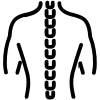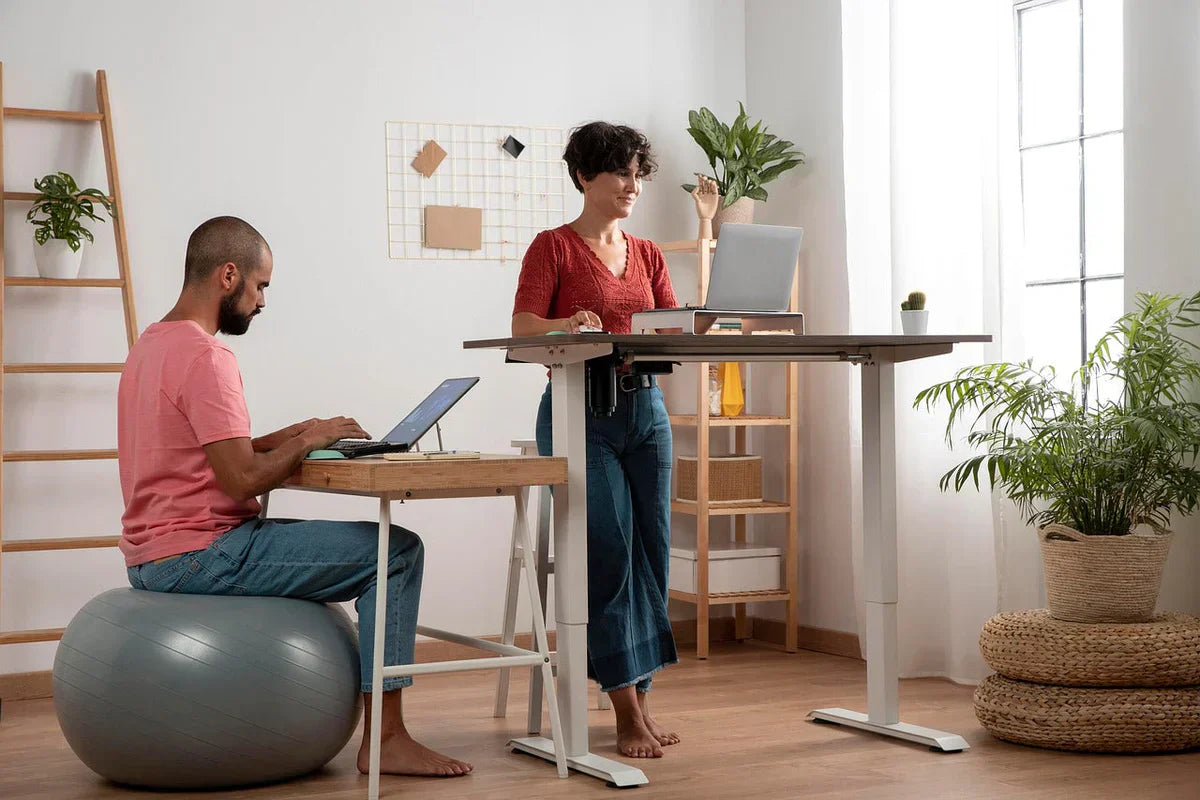If you want to improve your well-being and productivity at work, an ergonomic office set-up is nothing short of essential. Caring for your posture helps you prevent pain, reduce fatigue, and maximize your efficiency.
Good posture involves more than just sitting up straight. It’s a daily effort that requires using the right tools and furniture, properly arranging your workspace, and taking active breaks.
What Is an Ergonomic Posture?
An ergonomic posture is a natural position that minimizes tension on the muscles and joints and promotes proper blood circulation.
An ergonomic posture respects human anatomy and prevents pain and discomfort, especially in sedentary environments like offices.
Why Is an Ergonomic Posture Essential at Work?
Beyond helping you feel more comfortable, an ergonomic posture protects your health and improves your productivity.
It reduces tension on your muscles and joints, alleviating or preventing chronic pain. It can also improve your energy and focus by supporting proper blood circulation and reducing physical fatigue.
On the other hand, neglecting your posture can lead to health problems that worsen your productivity.
Consequences of Poor Posture on Health

Muscular and Joint Pain
Poor posture can lead to significant pain in the back, shoulders, and neck. These chronic tensions are often the result of sitting with a misaligned spine. In the long-term, poor workplace posture can cause musculoskeletal disorders.
Poor Circulation
Working for long periods of time with poor posture negatively impacts your blood circulation. The end result is swelling, legs that feel heavy, and even an increased risk of certain vascular conditions.
Proper posture is essential for healthy circulation.
Stress and Reduced Productivity
The stress and pain caused by poor posture can affect your mental health.
An ergonomic posture promotes a clearer mind and better focus, which translates to increased productivity.
How to Improve Your Posture at Work
Adjust Your Chair Height
The first step to a more ergonomic workplace posture is adjusting the height of your chair so that your feet touch the ground. Your hips should be just slightly higher than your knees, a position that keeps your spine more naturally aligned.
Correctly Position Your Screen and Keyboard
Position your screen at eye level to avoid curving your neck or shoulders. Your keyboard should be placed at a comfortable distance from your body to avoid extending your arms.
Keep Your Back and Legs Properly Aligned
Make sure that your back is straight and supported by your ergonomic chair. Your legs should be bent at a 90-degree angle.
Regularly Change Position
Alternating between standing and sitting, or simply walking for a few minutes every hour, helps to avoid the pain and stiffness caused by long hours at a desk. An ergonomic posture includes integrating more active habits into your lifestyle.
Use an Ergonomic Chair

A well-designed ergonomic chair with adequate lumbar support is an essential investment. The Bloon active seat, for example, encourages micromovements and gently works the back and core muscles, allowing you to naturally maintain an ergonomic posture.
Ergonomic seats like these help align the body and correct poor posture, improving your health and and comfort on the daily.
FAQ: Ergonomic Workplace Posture
What Is an Ergonomic Posture?
An ergonomic posture is a working position that minimizes musculoskeletal tension and maximizes comfort.
What Is Proper Ergonomic Posture?
Proper ergonomic posture consists of keeping your back straight, your feet flat on the ground, your elbows at a 90-degree angle, and your screen at eye level.
What Are the 3 Types of Ergonomics?
- Physical ergonomics (related to the human body and its environment/equipment)
- Cognitive ergonomics (related to information processing and mental workload)
- Organizational ergonomics (related to work systems, structures, and policies)
What Does “Ergonomic” Mean?
The term “ergonomic” describes anything designed to maximize physical safety, comfort, and efficiency.
What is the Definition of Ergonomics?
Ergonomics is a discipline centered on adapting work conditions, equipment, and tools to the user to improve their comfort and performance.
In conclusion, an ergonomic workplace posture is more than just a matter of habit. It’s a lifestyle—and one necessary for protecting your well-being, preventing chronic pain, and boosting your productivity.











